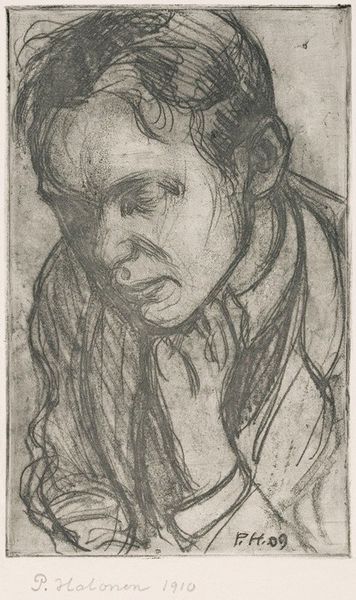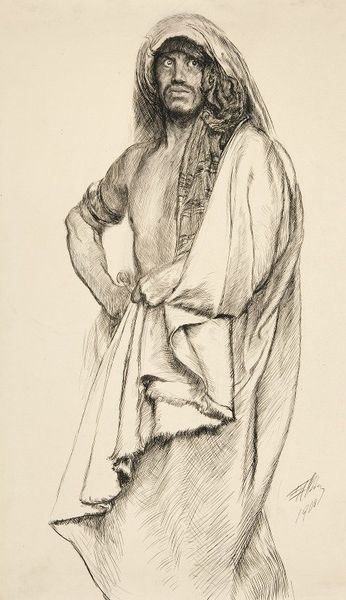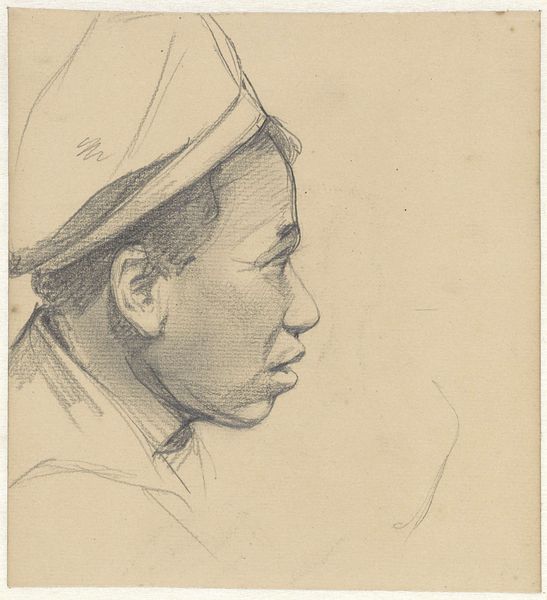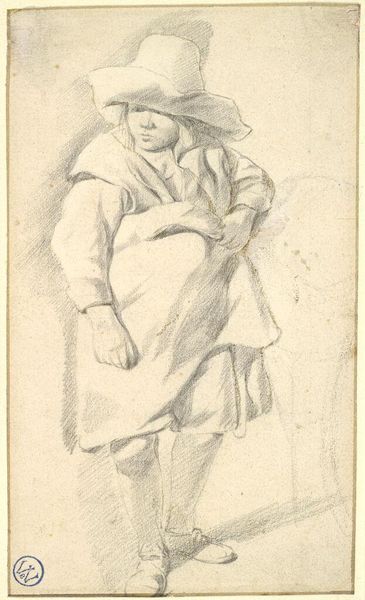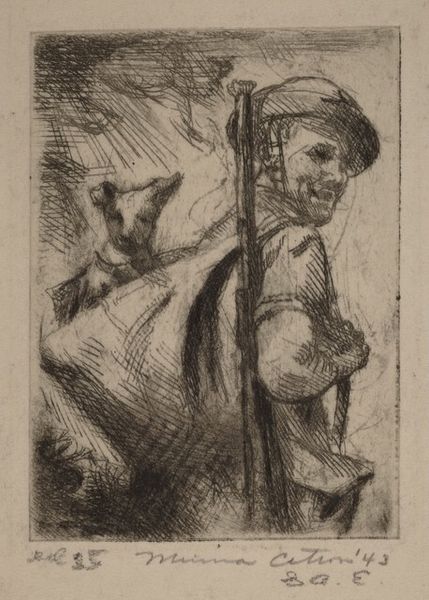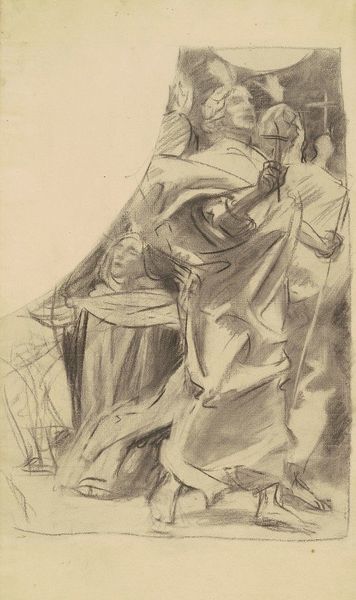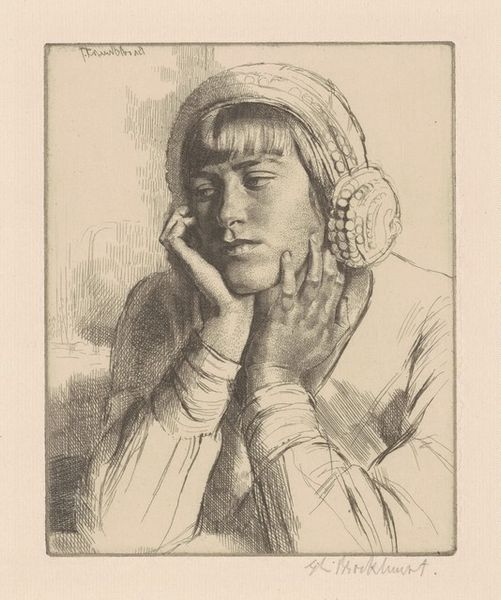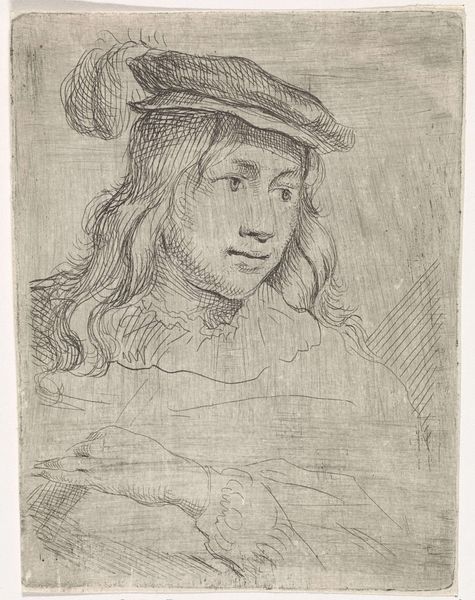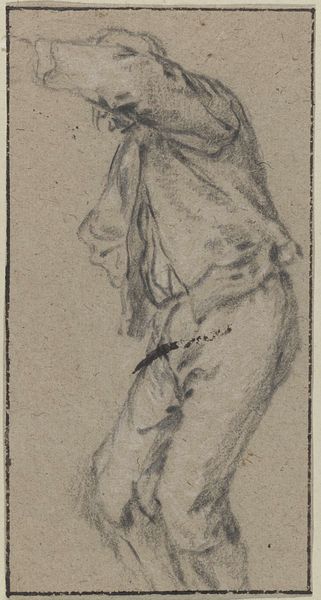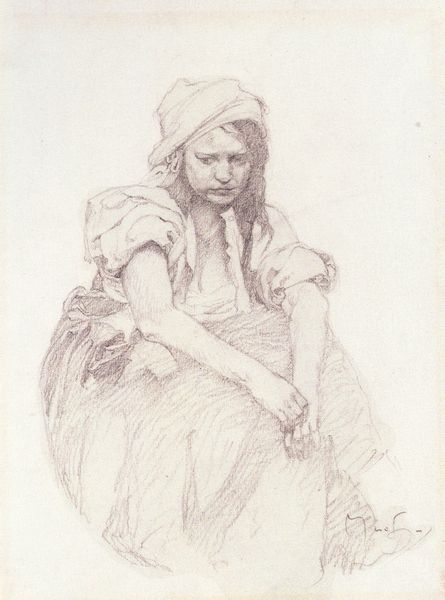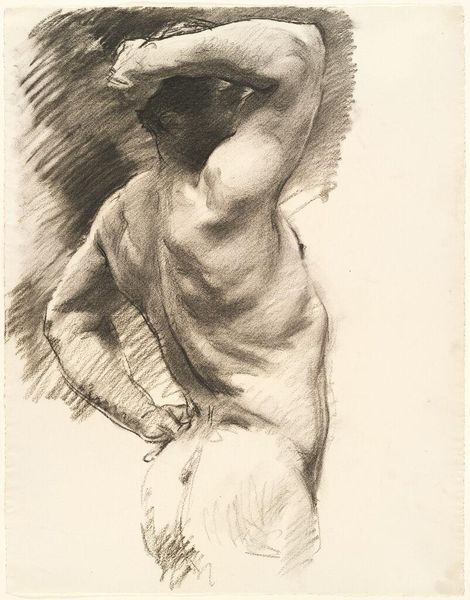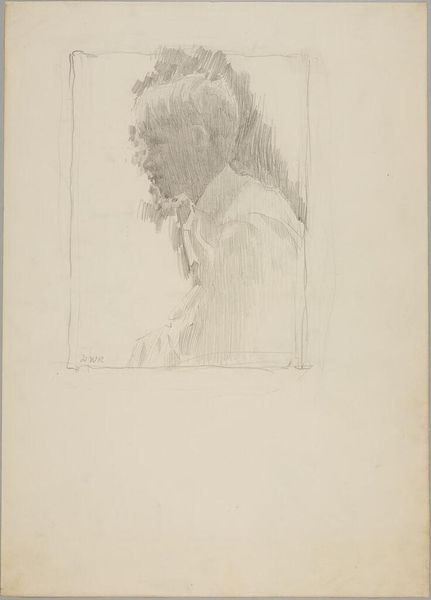
drawing, print, etching
#
portrait
#
drawing
# print
#
etching
#
figuration
#
pencil drawing
#
line
#
portrait drawing
#
realism
Dimensions: plate: 13.65 × 10 cm (5 3/8 × 3 15/16 in.)
Copyright: National Gallery of Art: CC0 1.0
Curator: Here, we have Gerald Leslie Brockhurst's etching from 1922, "By the Window". Editor: Immediately striking. There’s a certain melancholy that emanates from the subject’s downturned gaze, enhanced by the soft, almost hazy quality of the etching. Curator: The social and artistic milieu of the early 20th century was one of tremendous upheaval and shifting gender roles. Brockhurst's rendering invites questions about female identity during the Interwar period. Was she, like so many women, now poised to enter the workforce? And if so, what specific tensions of class, economics, or education might underscore that transition? Editor: Absolutely. From a purely formal perspective, observe the economy of line. The cross-hatching used to model the face is precise, giving it form and weight, while the hat and shawl are sketched with a lighter, more suggestive hand. This contrast accentuates the face, inviting viewers to see the interiority of the model as her key defining element. Curator: It’s compelling to consider the historical power dynamics at play in portraiture as well. Was she empowered by this gaze, or was this simply Brockhurst's romanticizing lens? To what extent might social constraints have dictated the expressions women could exhibit publicly? It's important to deconstruct whose narrative is prioritized within the image. Editor: Agreed. However, looking at Brockhurst's understanding of chiaroscuro in the etching, particularly around the eyes and cheekbones, allows for the modeling of light in incredibly evocative ways. Also, the lines create both realistic shadowing and simultaneously, this almost ethereal texture and ambiance. It's a powerful synthesis of realism and artistic license, no? Curator: I do appreciate that tension. Art provides insight into social conditions. The work becomes a lens to see what roles society offered a given subject, and whose aspirations, desires, and identities were privileged, amplified, and celebrated in that society. The ability to see that rendered visible and available is what keeps the work relevant to contemporary viewers and conversations. Editor: Indeed. Seeing the image in that way is interesting and relevant for its focus and analysis. Curator: Agreed! Looking again with fresh eyes, the conversation has made even deeper readings more possible.
Comments
No comments
Be the first to comment and join the conversation on the ultimate creative platform.
